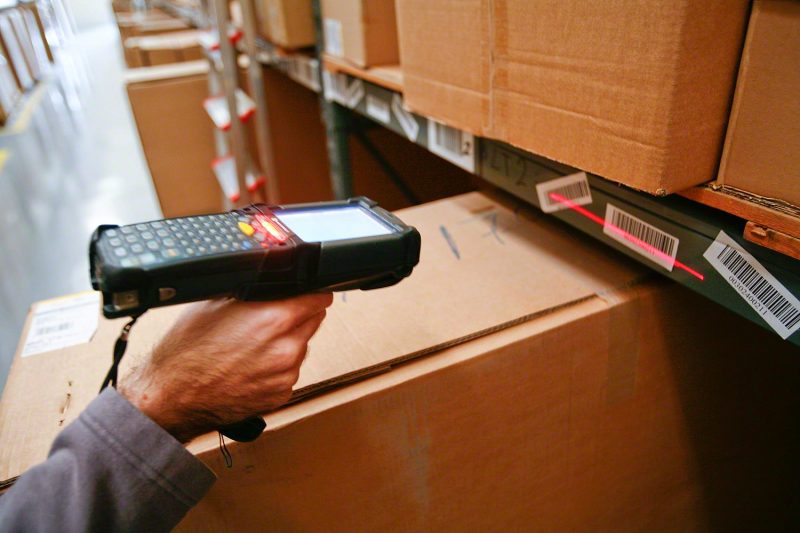It is the output of goods from the Customs territory of one country to another or to an industrial free zone, of goods or services, in compliance with the requirements of the standard trade laws.
Faqs
FREQUENTLY ASKED QUESTIONS
We invite you to have a look at the frequently asked questions and answers below, to better understand the procedures of a simplified export.


What are the Incoterms for?
INCOTERMS are standard terms for contracts of international trade and are used to determine which of the parties (exporter or importer):
- Pay the transportation of goods.
- Pay the insurance covering any damage suffered by the goods during transport.
- Establishes where the exporter must place the goods available to the importer.
- Determines who runs with other charges involved (customs, port, etc.).
What is a tariff nomenclature or classification?
To perform the export and import operations, companies need to identify the products to the market, as this allows the recognition of the duty to apply, the existence of tariff preferences and give a correct statistical data collection.
The tariff is the unit into which the nomenclature of the Harmonized Description and Coding is related. This is the description of a product with the aim of making it easier to identify and customs processing.
The Harmonized System was created specifically as a universal classification of products in order to facilitate the flow of goods across borders. It is used for processing and data transmission, terminology and a common code to identify categories of products, goods and / or transportable goods, even those that were not traded internationally. The nomenclature has more than 5,000 groups of goods identified by a six-digit code and contains the definitions and rules necessary for uniform application.
As structured nomenclature for the classification used by the Customs Tariff Harmonized System is also a legal and logical structure with a total of over 1,300 items grouped in 97 Chapters, and then articulated in 21 sections.
What is a tariff?
Fees are levied on goods in import, export and transit, as well as fiscal taxes, supplementary provisions and corresponding indices. Taxes on products become important from the XVI and XVII centuries following the mercantilist doctrine, later in the XIX century began a policy of tariff agreements between some countries. Currently many countries belong to associations and customs unions which have led to gradual reduction of tariffs (GATT, EEC, EFTA).
What are the Customs documents needed to export?
Air Waybill
It is the transport document and constitutes proof of existence of the contract of carriage and receipt of the cargo being transported and delivered to the consignee at the destination.
The salient features of this document are:
- The item of evidence of the contract of carriage.
- The load testing of the goods.
- It is a proof of the ownership of the merchandise.
It also serves as a “Packing List” i.e. shipping document detailing all goods shipped or all components of the same goods, specified in how many parts it is split.
The Packing List is to facilitate the location of the goods within a batch, and allows the easy recognition of the goods by customs, both in shipping and on landing.
What is a Proforma invoice?
A Proforma invoice is a document used by the seller to capture a detailed offer of a sale.
Being an offer, if accepted by the buyer, will be the source of the sales contract. It is therefore necessary to contain all information to establish the terms and conditions of sale.
Certificate of Origin
It is a document of international value that may be required to the exporter and certifies that certain goods were produced in a country and proceeds thereof. It is essential to identify the goods issue to receive the tariff treatment it deserves to reach the destination country. The issuance of certificates of origin is a traditional role of the Chambers of Commerce.
Health Certificate
They apply to goods of human use or consumption, and requested by the buyer and issued by a competent authority. It confirms that the goods entered are not subject to any disease or pests if they were food products and have been prepared in accordance with prescribed standards. In the case of exports to the United States it is mandatory to process the FDA certificate (Food & Drug Administration).
What is it required for the physical examination?
The nature, value, weight, size, description of goods and corresponding subheading.
What can I export?
All kinds of merchandise not prohibited for transport by air or if they have limitations in the destination country.
No goods can be sent to exceed the maximum amount allowed for the Simplified Export Method (50 Kg-110 pounds per item and a declared value between $ 1,000 and $ 5,000 depending on the country) or have the status of prohibited or restricted.
How many exports can I do?
There is no limit for exports per day, provided that each export does not exceed the limit of US$ 1,000 – $ 5,000 established in each country.
What are the costs associated with exporting?
We must take into account the cost of each shipment at the rate of weight / volume and destination country.
Taxes in the country of departure.
Import duties and taxes in the country of destination.
Costs of customs clearance in the destination country (customs broker intervention).
How many kilos/pounds can I export for each package?
According to regulations it is contemplated to 50kg /110 pounds per waybill, and the amount of export packages is unlimited. (The maximum weight may vary by service and destination, you have to check that with your local Courier company).
Weight/Volume freight cost calculation
For shipments that take up a large space but have little real weight, you must calculate the volumetric weight and always apply the largest of the weights obtained. The formula for these cases is as follows.
ASSESSING THE VOLUME ON AIR CARGO:
Formula: Length x Width x Height = Total divided by 6,000
Example:
40 x 48 x 60 cm, 5 kg gross weight
The volumetric weight is: 40 x 48 x 60 = 115,200 volumes (cm)
The volume is 115.200/6.000 kg = 19.2
The volumetric weight is higher than the actual weight (19.2 kg to 5 kg), therefore, its weight is attributable to 19.2 kilograms.
The weight in an airliner cargo is always calculated taking into account the biggest weight.
Are there any limits on the dimensions of the packages?
The size of the packages must comply with the rules of each Courier company but as an example the longest side may not exceed 1.05 m (41 inches).
Recommendations for the packaging
The use of proper packaging materials is critical to the success of the business. The main rule to follow is: the wrapping or packaging must be appropriate to the nature of your product.
Fragile
Use of cushioning materials, especially to prevent the contents from moving. We recommend a minimum thickness of 50mm conditioning.
Consider strength, cushioning and durability when selecting the package.
Put fragile goods in the center of the packaging, ensuring they do not touch the sides. The object should be well cushioned on all sides.
Do not consider sufficient to put Fragile labels for careful packaging. That only serves as an information source.
General rules
Choose the size of the packaging according to its content. The filled boxes are likely to disarm, and too full, to bursting.
Use corrugated cardboard or back gray provided by the Courier.
Use triangular tubes not cylindrical tube-type to pack rolled plans, maps and blueprints.
Protect your data discs (CD or DVD), audio and video tapes, with soft cushioning material around.
Complete the address clearly, using uppercase letters when handwriting labels to improve readability for staff involved.
If you reuse a box, remove all labels and tape. Make sure the box is in good condition.
Do not over seal your package. Remember that all shipments can be opened by Customs authorities for inspection.
Do not use cellophane tape or rope to seal your shipment.
Prohibitions and Restrictions
1. Explosives
Any chemical compound, mixture or device capable of producing a fact-explosive fireworks, with substantial instantaneous release of heat and gas. All explosives are prohibited.
2. Arms and ammunition
Weapons and their component parts classified as ammunition, ammunition of any kind and firearms are prohibited.
3. Compressed gases and aerosols
Eg fire extinguishers, aerosols, butane gas stoves, gas lanterns blanket or even empty.
4. Flammable liquid
Liquids, mixtures of liquids, solids or liquids contained in solution or suspension to produce vapors. Eg Gasoline, paint thinner
5. Corrosive
Eg some cleaning fluids, anti-rust products, acid, caustic soda, batteries.
6. Inflated objects
7. Pornography
Documents, prints, photographs, books or other items and packages that include words, trademarks, aggressively offensive, indecent, or obscene are prohibited.
8. Flammable solids, objects and subjects of spontaneous combustion and are dangerous when wet
9. Irritants and magnets
10. Venom
Eg, arsenic, cyanide, pesticides, etc..
11. Dense metal
Eg mercury.
12. Biological specimens
Eg bacteriological and pathological specimens.
13. Perishable Products
14. Cash, checks
15. Liquids
Eg, perfumes, wines are allowed if they travel in sealed original factory packaging and well packed.
16. Animals
17. Drugs prohibited by law
18. Products and jewelry made of gold and silver
19. Cultural heritage
Eg museums samples without special permission, meteorites and gemstones.

